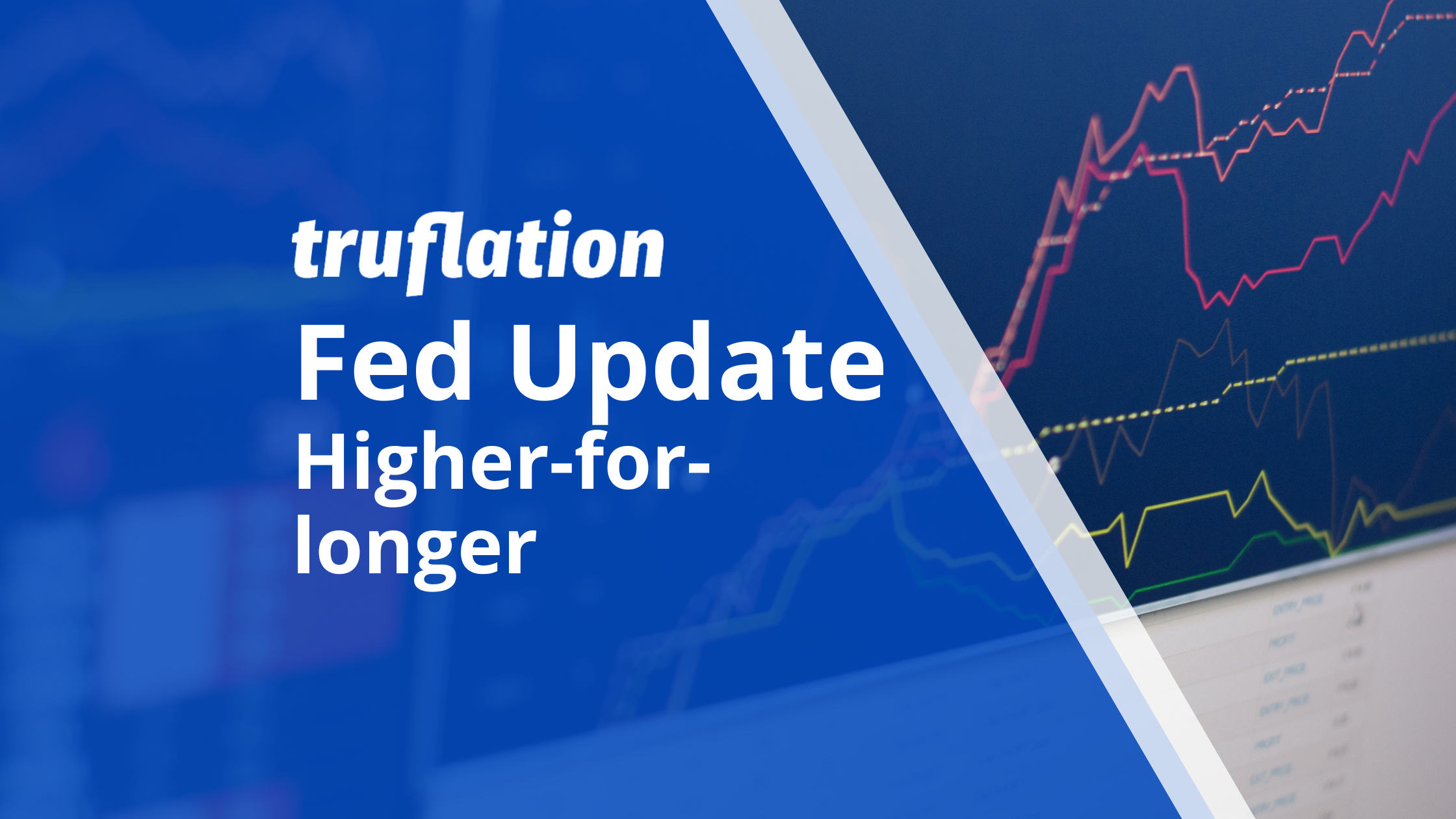
Truflation Fed Update: Higher-for-longer
Published 22 Sep, 2022
Yesterday, the Federal Reserve made its third rate rise this year, bringing the federal funds rates to 3.25%. The J-Powell ‘higher-for-longer’ message to markets: tightening will continue until the inflation data improves, neutral rates and market weakness be damned.
The Federal Reserve dot-plot shows that the Fed is serious about keeping rates higher for longer, well into 2024. Future markets expect rates to rise to 4.4% this year and peak somewhere around 4.6% in 2023. Let’s look at the data and where the US economy, brought to you by the Federal Reserve, is taking us.
At Truflation, our US inflation index decreased by 0.8% over the last month to 8.8% (at the time of writing 22 September 2022). Our other datasets suggest inflation is holding steady or starting to decrease, albeit slowly. Both food and energy prices continue to buck the trend, rising by 1.32% and 1.86%, respectively, over the last month at Truflation.
Our Truflation housing index decreased by 0.6% from August to September. Higher interest rates are putting pressure on home sales, but there are mixed signals in the market. This statement from the US Mortgage Banking Association illustrates it well:
“MBA’s estimate of new (US) home sales jumped 18% in August, bringing the sales pace to 699,000 units, which is the strongest pace since May 2022. The current sales pace is still 23% lower than the November 2021 peak and is down 20% from last year.”
Our data shows that the Federal Reserve’s strategy could be working. Housing demand continues to weaken, but the supply of houses in the market continues to increase. Next month we will be deep diving into the US housing market as part of our series on the drivers of inflation, so watch this space for more data-led analysis on US Housing.
Credit markets are already feeling the effects of this rate rise, which will put further liquidity pressures on markets, businesses and consumers in the US. Case in point: Citrix, more debt syndication pain is on the way for banks as it becomes harder to offload or restructure corporate debt due to a lack of liquidity in the market or buyers! This is just one area where higher interest rates will reduce credit availability.
In other news, what’s going on with unemployment? Truflation cannot make sense of the US unemployment rate, which rose slightly to 3.7% in August, but US jobless claims are decreasing weekly. In a recent article from PIIE, their economists argue that a record US productivity slump in the first half of 2022 has led to higher inflation and unemployment. According to their calculations, US productivity has fallen at an “optimistic” rate of 4% in 2022. These are the largest two-quarter declines since data collection began in 1947! Maybe this drop in US productivity is responsible for strong job growth. If output growth is slow or negative, you need more people to do the same job.
The Federal Reserve acknowledged this week that there is no ‘painless’ way to beat inflation. Even the Federal Reserve’s projections and many economists believe it will take the US unemployment rate rising beyond 5% to get inflation back under control. Economic pain will be part of the outcome; it is time markets stopped hoping for a quick policy reversal and accepted tightening is here for the foreseeable future.
For more macro insights, sign up for Truflation's weekly newsletter.
Written by CeAnn Simpson
About Truflation
Truflation is an economic data aggregator serving independent, unbiased, real-time data on-chain and off-chain. Truflation’s goal is to help individuals, investors, companies, and institutions make more informed decisions by having access to independent and unbiased economic information.
Get Exclusive Insights
with our Weekly Newsletter